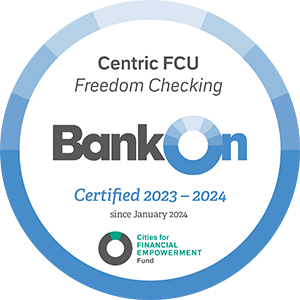
Economic Impact Payments: What to Expect and How to Spend Yours Wisely
April 8, 2020
While families across the country are anxiously awaiting the arrival of their stimulus checks, we’ve put together some information on what you can expect. In addition, we’ve provided some helpful tips on ways to spend your check that will benefit your financial future.
Who is eligible for the economic impact payment?
- Tax filers with adjusted gross income up to $75,000 for individuals and up to $150,000 for married couples filing joint returns will receive the full payment.
- For filers with income above those amounts, the payment amount is reduced by $5 for each $100 above the $75,000/$150,000 thresholds.
- Single filers with income exceeding $99,000 and $198,000 for joint filers with no children are not eligible.
- Social Security recipients and railroad retirees who are otherwise not required to file a tax return are also eligible and will not be required to file a return.
- Eligible taxpayers who filed tax returns for either 2019 or 2018 will automatically receive an economic impact payment of up to $1,200 for individuals or $2,400 for married couples and up to $500 for each qualifying child.
- Here is a helpful calculator from H&R Block that estimates how much you could be receiving: https://www.hrblock.com/coronavirus-tax-impact/calculator/
How will the IRS know where to send my payment?
- The vast majority of people do not need to take any action. The IRS will calculate and automatically send the economic impact payment to those eligible.
- For people who have already filed their 2019 tax returns, the IRS will use this information to calculate the payment amount. For those who have not yet filed their return for 2019, the IRS will use information from their 2018 tax filing to calculate the payment.
- The economic impact payment will be deposited directly into the same banking account reflected on the return filed.
The IRS does not have my direct deposit information. What can I do?
- In the coming weeks, Treasury plans to develop a web-based portal for individuals to provide their banking information to the IRS online, so that individuals can receive payments immediately as opposed to checks in the mail.
I am not typically required to file a tax return. Can I still receive my payment?
- The IRS will use the information on the Form SSA-1099 or Form RRB-1099 to generate Economic Impact Payments to recipients of benefits reflected in the Form SSA-1099 or Form
- RRB-1099 who are not required to file a tax return and did not file a return for 2018 or 2019. This includes senior citizens, Social Security recipients and railroad retirees who are not otherwise required to file a tax return.
- Since the IRS would not have information regarding any dependents for these people, each person would receive $1,200 per person, without the additional amount for any dependents at this time.
I have a tax-filing obligation but have not filed my tax return for 2018 or 2019. Can I still receive an economic impact payment?
- The IRS urges anyone with a tax-filing obligation who has not yet filed a tax return for 2018 or 2019 to file as soon as they can to receive an economic impact payment.
- Taxpayers should include direct deposit banking information on the return.
I need to file a tax return. How long are the economic impact payments available?
- For those concerned about visiting a tax professional or local community organization in person to get help with a tax return, these economic impact payments will be available throughout the rest of 2020.
Once you’ve received your check, be sure to spend it wisely. Here are a few ways to spend your stimulus check that will benefit your financial future:
Contact your financial institution or anyone you have a financial obligation to.
- Ask your financial institution for Skip-A-Pay and deferment options that they may have available.
Make a budget.
- Know your monthly income.
- List your monthly expenses.
- Break it down to a weekly budget to help you stay on track.
- Here are a few helpful tools to help you get started:
– Step 1 – Household Budget Worksheet
– Step 2 – Monthly Plan for Spending, Bill Paying & Saving
Create an emergency fund.
- Use these funds to create a savings that will protect your budget
- $1000 is the recommended emergency fund
Pay down debt.
- Take advantage of possible rate reductions and pay down debt
- As you pay off one debt, use those payments towards the next debt
- Use the “Snowball Method” recommended by Kelly Brantley and Dave Ramsey
Prepare for what’s to come.
- Set aside money for upcoming things like back-to-school, Christmas, home repairs, etc.
- Don’t forget to plan for the expenses of doctor’s appointments and medical bills.
For more information and the latest official information, check out the Internal Revenue Service’s website: https://www.irs.gov/coronavirus.
